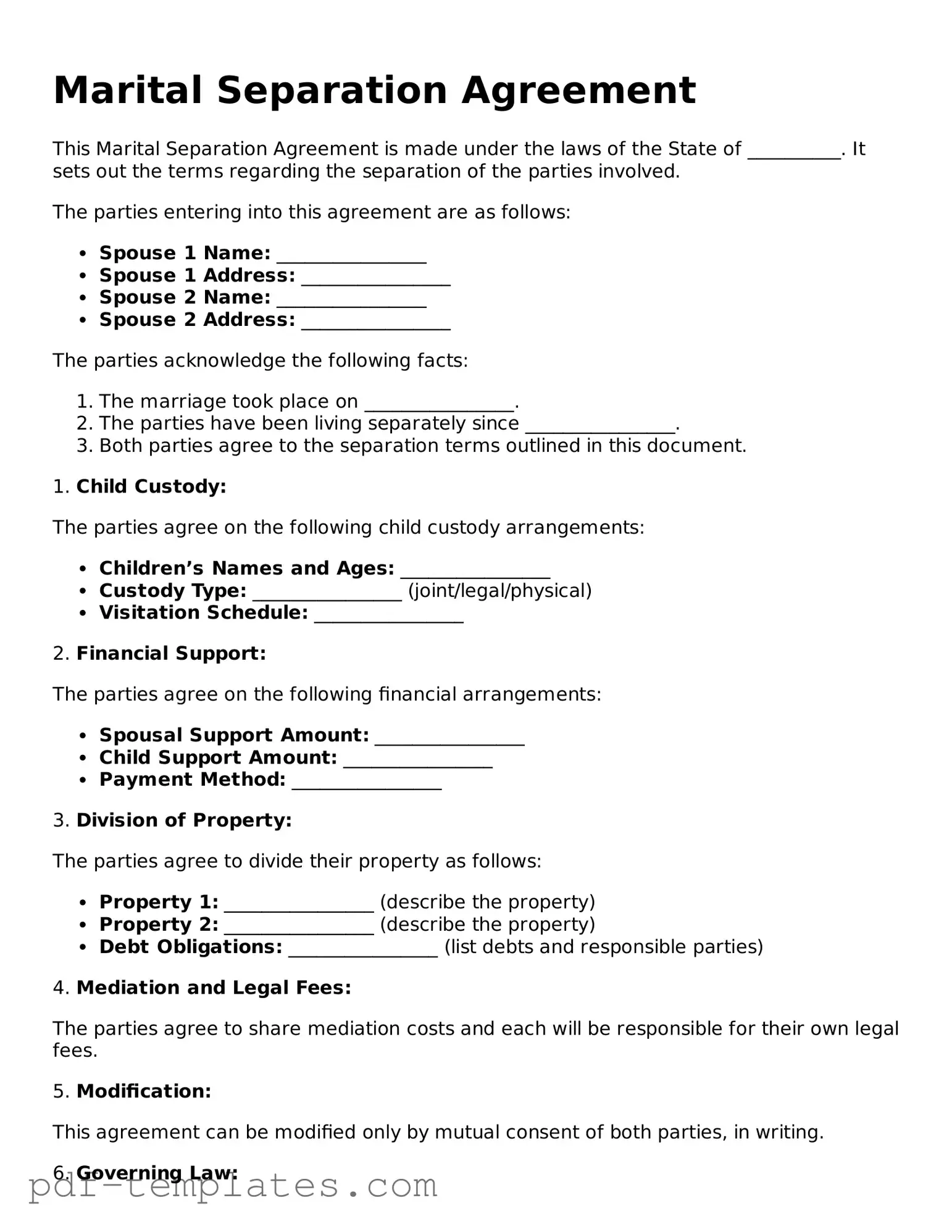The Marital Separation Agreement is similar to a Divorce Agreement, as both documents outline the terms of the dissolution of a marriage. A Divorce Agreement typically formalizes the arrangements regarding property division, child custody, and spousal support after a couple has decided to end their marriage. While a Marital Separation Agreement may precede a divorce, it serves a similar purpose in establishing clear expectations and responsibilities during the separation period.
Annuity Agreements share similarities with the Marital Separation Agreement in that they both involve financial arrangements between parties. Annuity Agreements provide a structured payment plan for future financial obligations, such as spousal support or child support, which can also be addressed in a Marital Separation Agreement. Both documents aim to protect the financial interests of the parties involved.
Separation Agreements are closely related to Marital Separation Agreements, as they both define the terms under which a couple will live apart. A Separation Agreement can be used in various contexts, including legal separations that do not lead to divorce. Both documents address issues such as property division, child custody, and support obligations, ensuring that both parties understand their rights and responsibilities.
Child Custody Agreements are another document that aligns with the Marital Separation Agreement. These agreements specifically focus on the custody and care of children following a separation or divorce. While a Marital Separation Agreement may encompass child custody arrangements, a Child Custody Agreement provides a more detailed framework for parenting plans, visitation schedules, and decision-making responsibilities.
Property Settlement Agreements bear a resemblance to the Marital Separation Agreement as they specifically deal with the division of marital assets. These agreements outline how property, debts, and other financial assets will be divided between spouses. Like the Marital Separation Agreement, a Property Settlement Agreement aims to provide clarity and prevent disputes regarding asset distribution.
Spousal Support Agreements are also similar to the Marital Separation Agreement, as they address financial support obligations between spouses. These agreements specify the amount and duration of support payments, ensuring that both parties have a clear understanding of their financial responsibilities. The Marital Separation Agreement may include provisions for spousal support, making it a critical component of the separation process.
Understanding the various agreements involved in divorce can be complex, but clarity can be achieved through properly executed documents. For instance, a Texas Vehicle Purchase Agreement serves as a legal framework for vehicle transactions, ensuring both buyers and sellers are protected. To learn more about the specifics of this agreement, you can visit https://documentonline.org/blank-texas-vehicle-purchase-agreement, which outlines the essential terms related to these transactions.
Lastly, Cohabitation Agreements can be compared to Marital Separation Agreements in terms of outlining the rights and responsibilities of individuals in a relationship. While Cohabitation Agreements are typically used by unmarried couples, they serve a similar purpose by clarifying financial arrangements and property rights. Both documents aim to prevent misunderstandings and provide a clear framework for the relationship, whether it involves separation or cohabitation.
